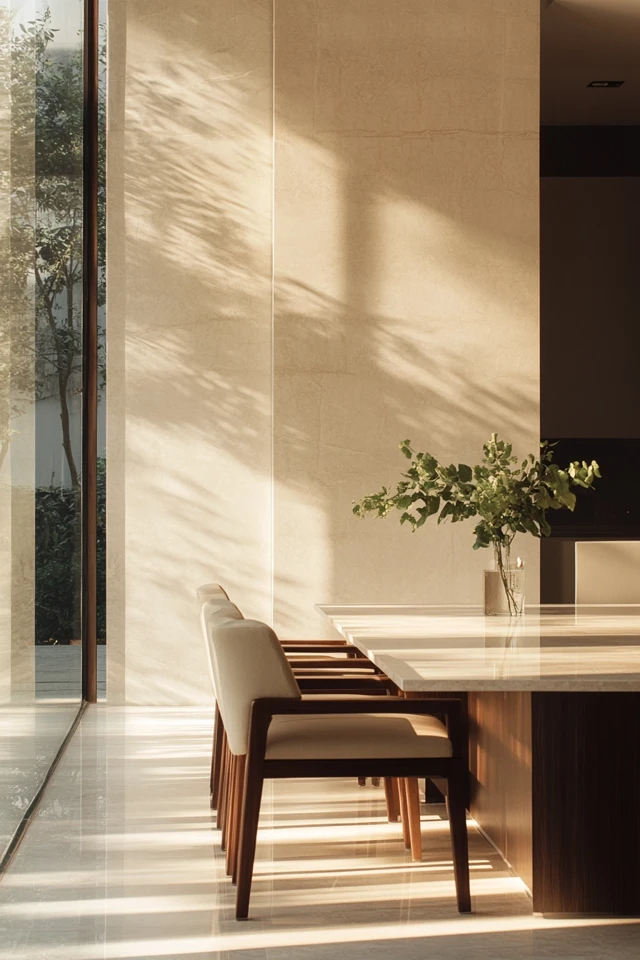Natural light is one of the most powerful elements in minimalist design. It has the ability to transform spaces, making them feel larger, brighter, and more inviting. In minimalist interiors, where simplicity and openness are key, natural light plays an even more crucial role. It enhances the beauty of clean lines, highlights textures, and reduces the need for excessive artificial lighting or decor.
I remember how bringing in more natural light transformed my living room. Removing heavy curtains, painting the walls a soft white, and strategically placing mirrors created a brighter, more open space that felt instantly calming. It was a game-changer for both the aesthetic and atmosphere of the room.
In this guide, I’ll share tips on how to use natural light in minimalist spaces to maximize brightness, create warmth, and emphasize the beauty of your home.
Why Natural Light Matters in Minimalist Design
Benefits of Natural Light
- Enhances Space: Makes rooms feel larger and more open.
- Highlights Design: Accentuates textures, materials, and colors.
- Improves Mood: Creates a calming and uplifting environment.
- Saves Energy: Reduces the need for artificial lighting during the day.
1. Choose Light, Neutral Colors for Walls
Walls painted in light, neutral colors amplify the effect of natural light.
Why It Works
- Reflects light better than dark colors, making the room feel brighter.
- Creates a clean, cohesive backdrop for minimalist decor.
Best Colors to Use
- Soft White: Enhances brightness and gives a fresh look.
- Light Beige: Adds warmth without overwhelming the space.
- Pale Gray: A cool, modern neutral that complements natural light.
Example:
A living room with white walls and large windows feels airy and open, allowing natural light to take center stage.
2. Opt for Sheer or Bare Windows
Heavy curtains or blinds can block natural light and make a room feel smaller.
Window Treatment Ideas
- Sheer Curtains: Filter light while maintaining privacy.
- Roller Shades: Simple, low-profile shades that disappear when not in use.
- No Curtains: Leave windows bare if privacy isn’t a concern, maximizing light and views.
Styling Tip:
Choose neutral-colored or white curtains to blend seamlessly with your minimalist space.
3. Use Mirrors to Reflect Light
Mirrors are an excellent tool for amplifying natural light in minimalist spaces.
How to Use Mirrors
- Place a large mirror opposite a window to reflect light throughout the room.
- Use mirrored furniture or decor for subtle light-enhancing effects.
- Opt for frameless or simple-framed mirrors to keep the look clean and modern.
Example:
A round mirror on a blank wall opposite a window can double the natural light in a small bedroom.
Picture Gallery
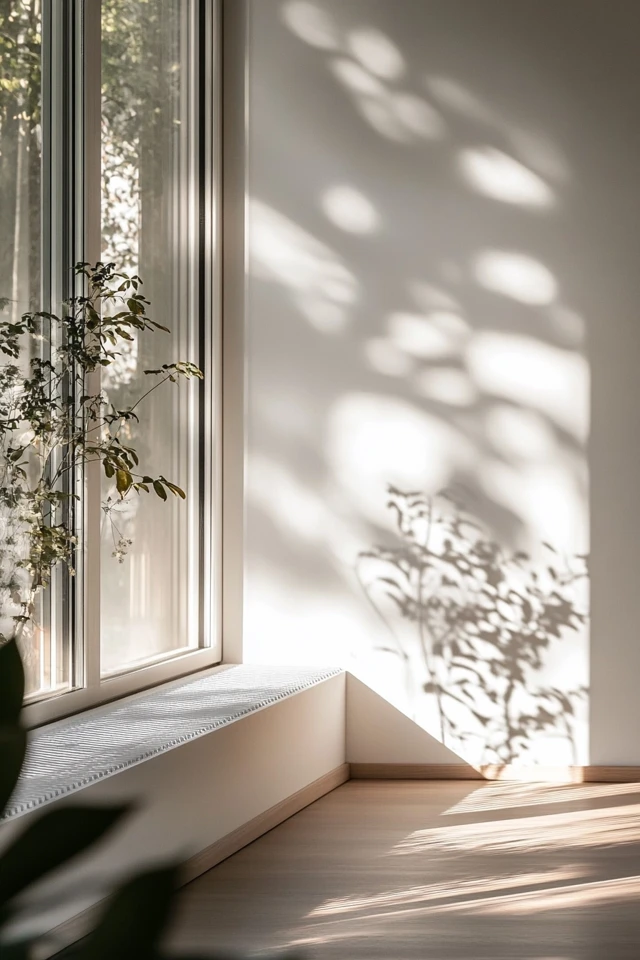
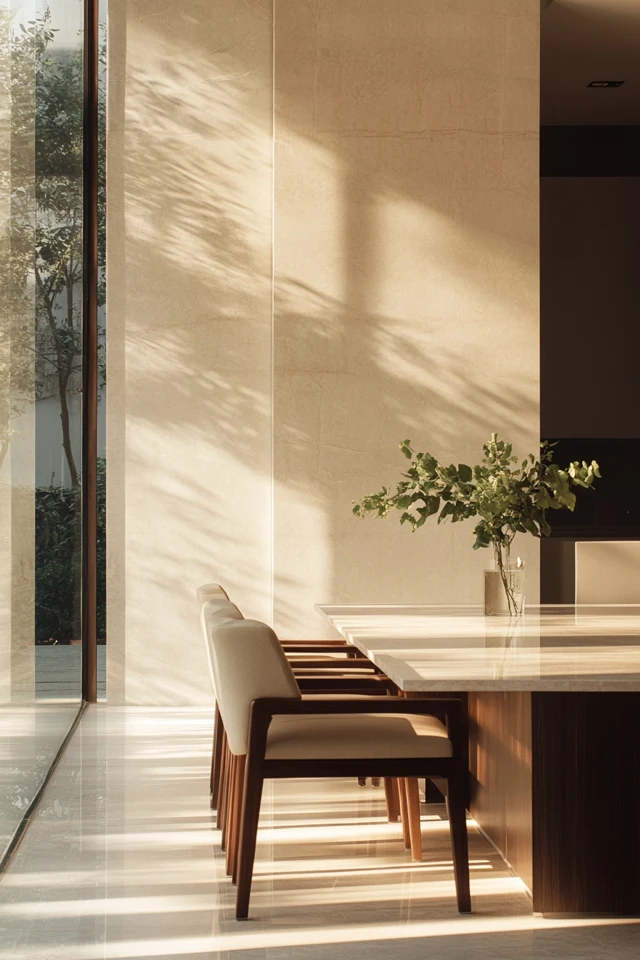
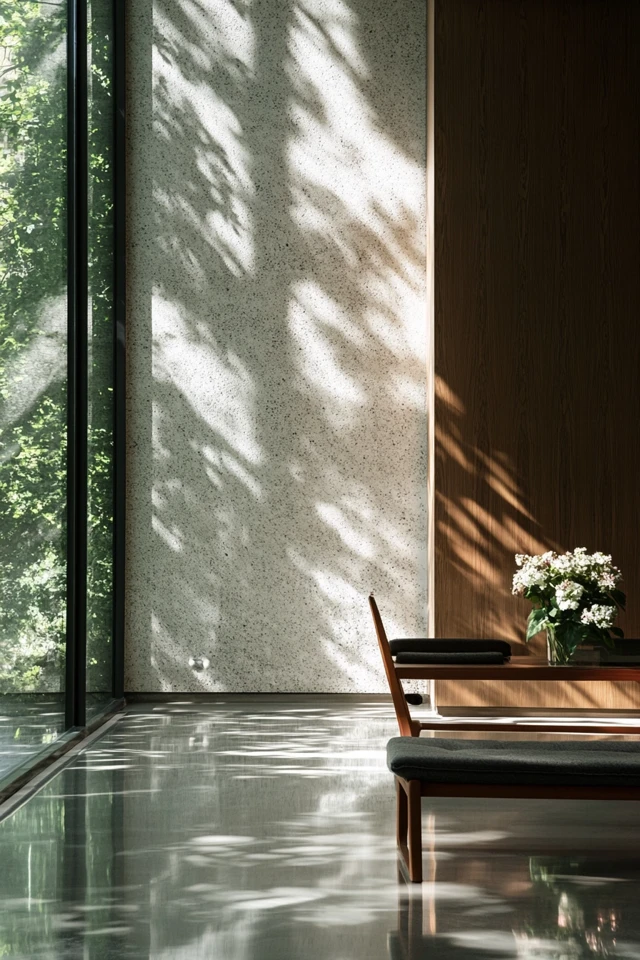
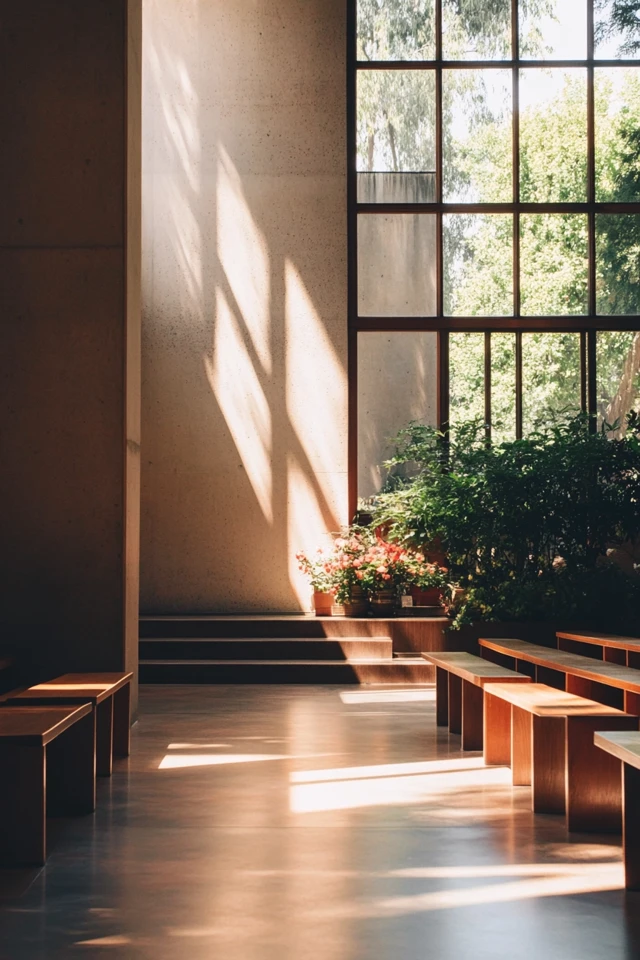

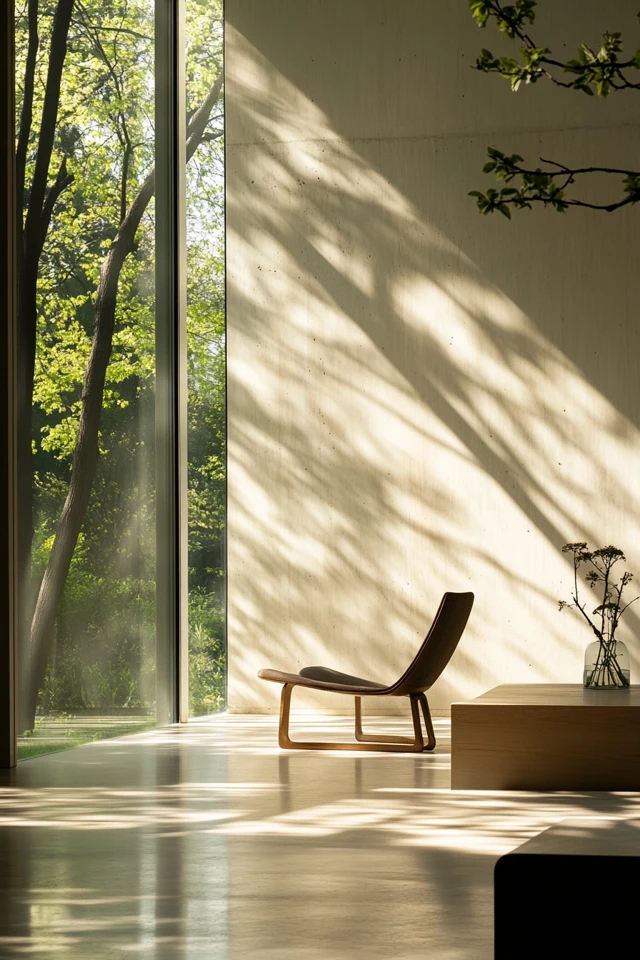
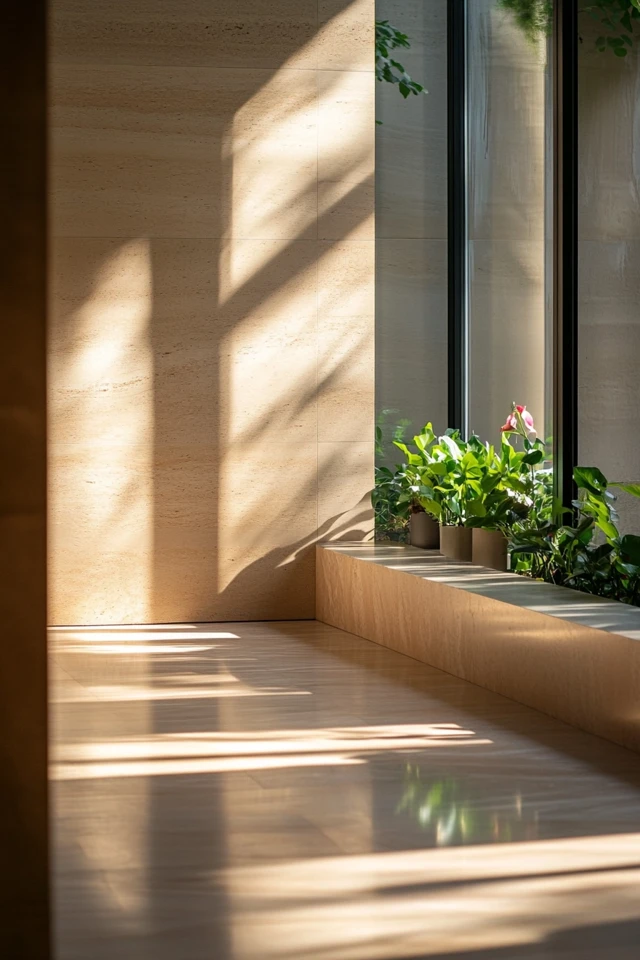
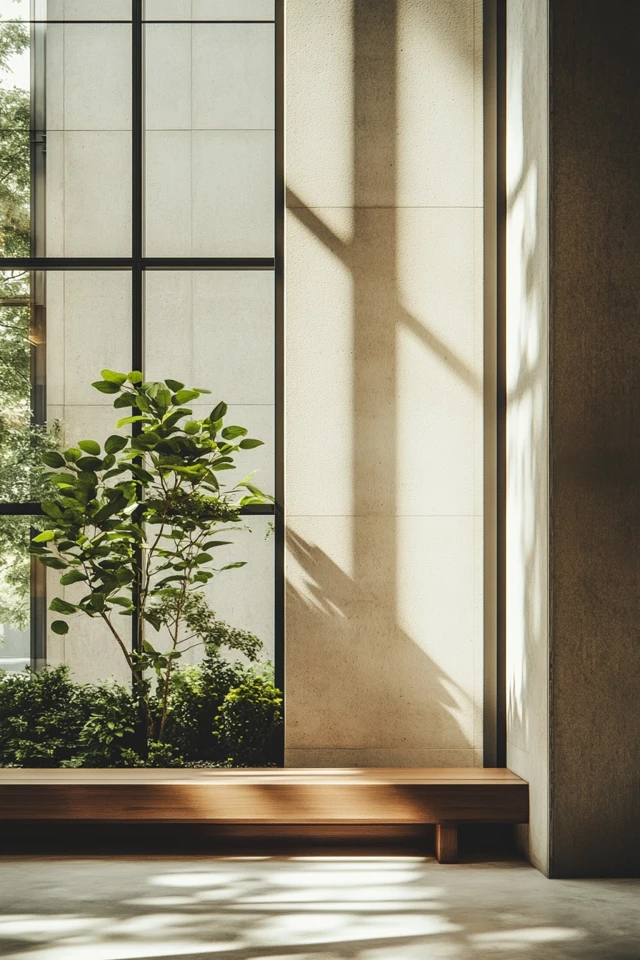
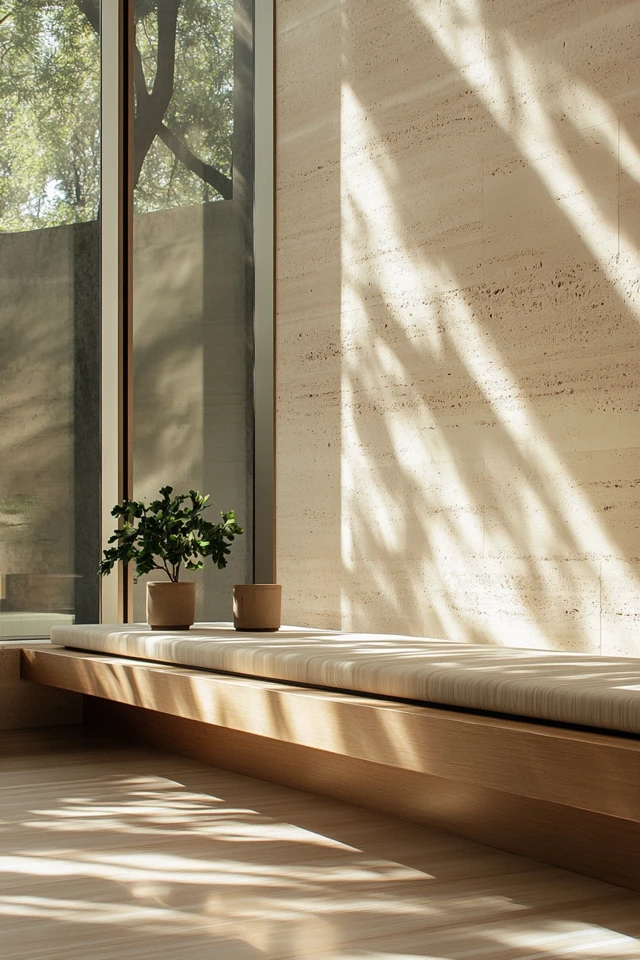
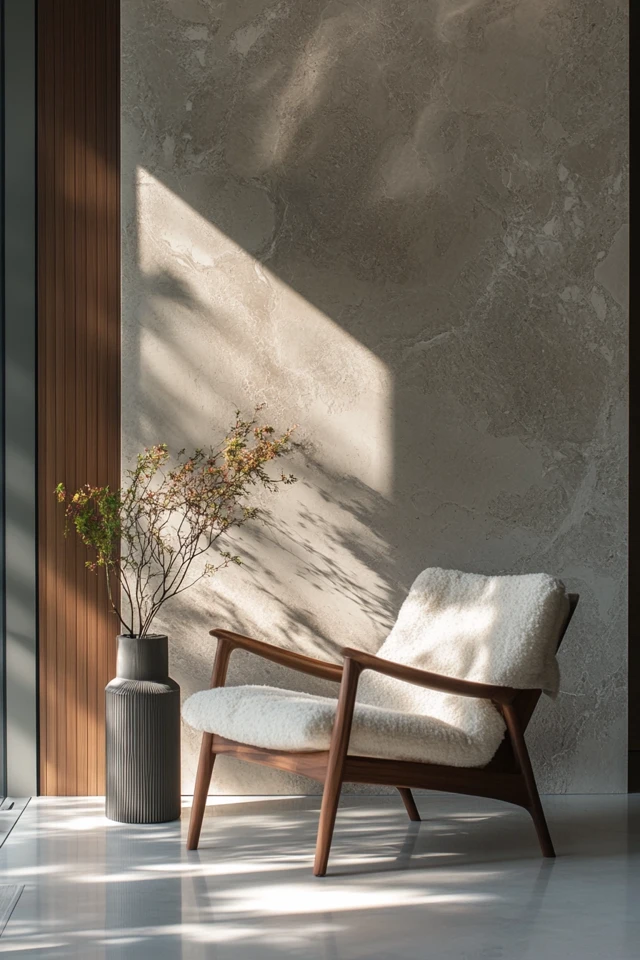
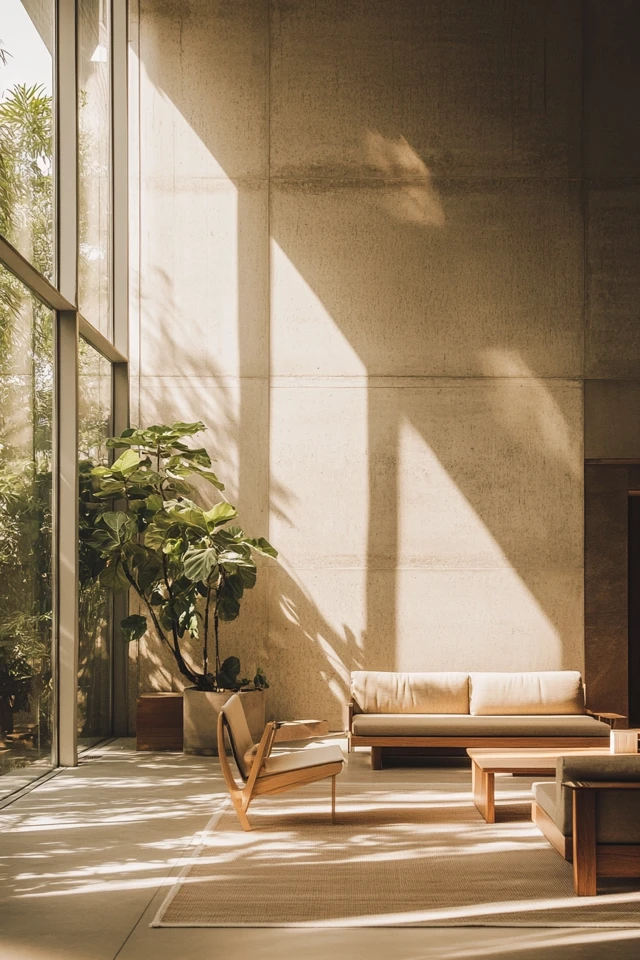
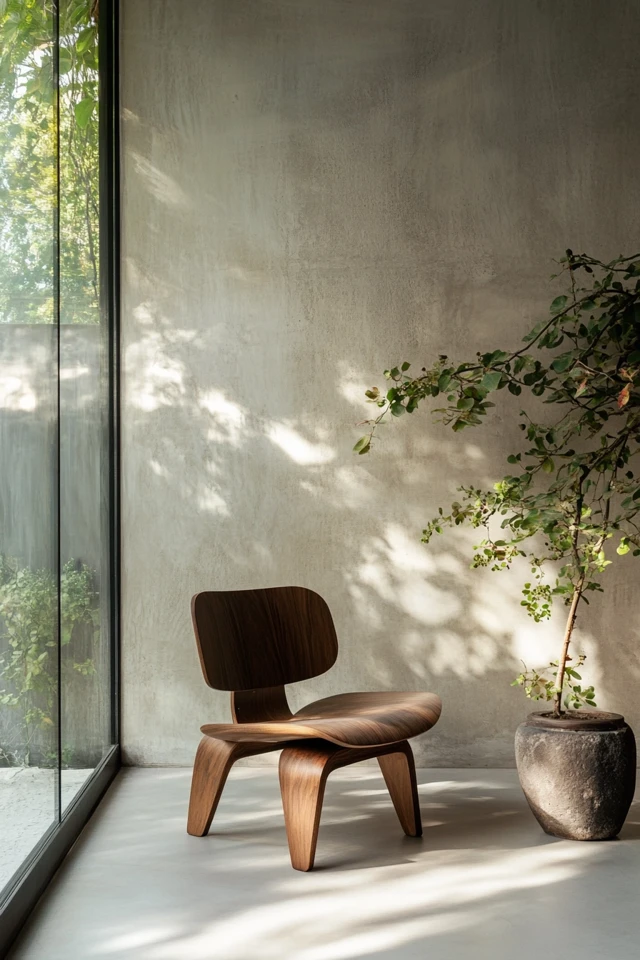
4. Arrange Furniture to Maximize Light
The placement of furniture can either enhance or block natural light in your space.
Tips for Furniture Placement
- Avoid placing tall or bulky furniture near windows.
- Keep seating areas close to natural light sources for a cozy, well-lit vibe.
- Use low-profile furniture to maintain an open flow of light.
Example:
Position a minimalist sofa parallel to a large window to create a bright and inviting living area.
5. Incorporate Glass Elements
Glass allows light to flow freely, adding to the open feel of minimalist spaces.
Ideas for Using Glass
- Install glass doors or partitions to let light pass between rooms.
- Use glass-topped tables for a sleek, light-enhancing touch.
- Choose transparent or frosted glass for light fixtures.
Example:
A frameless glass shower in a bathroom allows natural light to reach every corner, enhancing the minimalist aesthetic.
6. Keep Clutter Away from Windows
Windows should remain unobstructed to let natural light pour in.
How to Keep Windows Clear
- Avoid placing shelves, plants, or furniture directly in front of windows.
- Use wall-mounted storage solutions instead of floor-standing units near windows.
- Keep window sills clean and free of clutter.
Pro Tip:
If you want to add decor to a window area, opt for a single, small plant or a sleek vase.
7. Use Light-Enhancing Materials
Certain materials work better than others in bouncing light around a room.
Best Materials for Enhancing Light
- Glossy Finishes: Use glossy tiles or lacquered furniture to reflect light.
- Metal Accents: Incorporate brass, chrome, or stainless steel for subtle gleams.
- Natural Stone: Polished marble or quartz reflects light while adding texture.
Example:
A marble countertop paired with chrome fixtures can brighten a minimalist kitchen.
8. Incorporate Skylights or High Windows
For spaces with limited wall windows, skylights or high windows can bring in extra natural light.
Why Skylights Work
- Bring light into spaces that lack direct access to windows.
- Create a sense of openness and connection to the outdoors.
Styling Tip:
Position a reading nook or seating area under a skylight to take full advantage of the natural light.
9. Choose Light, Reflective Flooring
Flooring can significantly impact how light travels in a room.
Best Flooring Options
- Light Wood: Oak or ash floors create a bright, warm foundation.
- Polished Concrete: Reflects light and adds a modern, minimalist touch.
- Neutral Tiles: Glossy white or beige tiles amplify light.
Example:
A living room with light wood flooring and large windows creates a seamless flow of natural light.
10. Add Greenery Near Windows
Plants thrive in natural light and bring life to minimalist spaces.
How to Use Greenery
- Place a tall plant like a fiddle-leaf fig near a window to add height and texture.
- Use small potted plants on window sills to frame the light source.
- Opt for low-maintenance plants like succulents if your window gets less light.
Styling Tip:
Stick to simple, neutral pots to keep the look cohesive and uncluttered.
Conclusion
Natural light is an essential element of minimalist design, offering brightness, openness, and warmth to your space. By maximizing windows, using reflective materials, and keeping clutter to a minimum, you can create a home that feels airy, calming, and connected to the outdoors.
For me, letting natural light guide my design choices was one of the most impactful changes I made to my home. It not only transformed the look of my space but also brought a sense of peace and energy to my everyday life.
So, embrace the beauty of natural light and let it shape your minimalist space. With these tips, you’ll create a home that’s as functional as it is beautiful.
FAQ
What if my home doesn’t get much natural light?
Use light colors, mirrors, and glass elements to amplify the light you do have. Layer in warm artificial lighting to mimic natural brightness.
Do sheer curtains provide enough privacy?
Yes, sheer curtains can offer privacy while still allowing light to filter through. For more coverage, layer them with roller shades.
Can natural light make small rooms feel larger?
Absolutely! Bright, natural light creates the illusion of more space and makes small rooms feel more open.
What types of plants work best for low-light spaces?
Snake plants, pothos, and ZZ plants thrive in low-light conditions and add greenery to minimalist spaces.
How do I balance natural light and artificial light in minimalist design?
Use natural light as your primary source during the day, and layer in soft, warm artificial lighting for evenings or darker corners.

